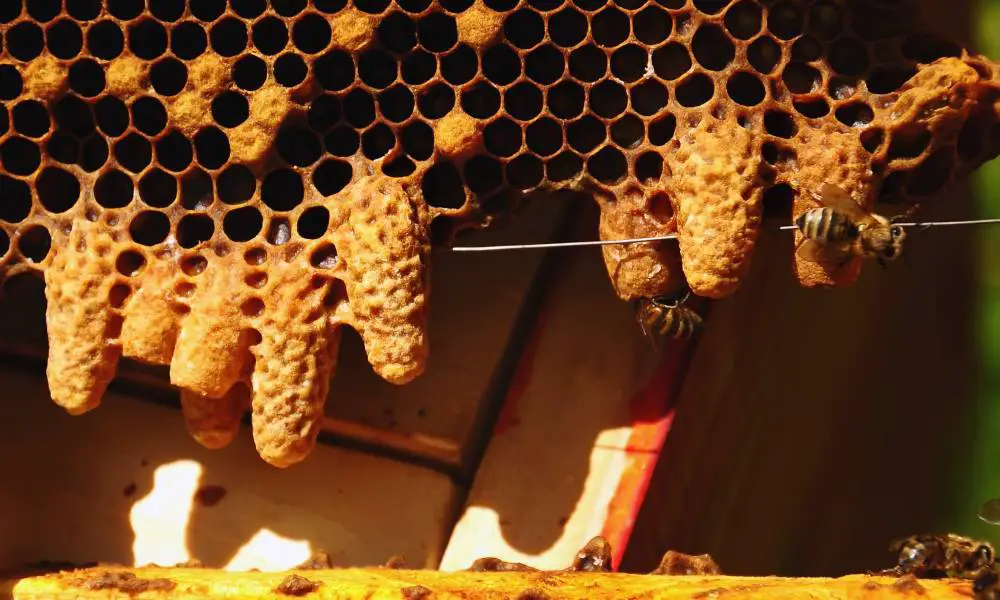

Beekeeping is more than just jarring honey. Some could argue that you can’t even harvest yummy honey or maintain bee colonies without proper care and food sources for your hive.
That’s where sugar syrup comes into play. Sugar syrup plays an important role in sustaining your colonies, especially in preparation for winter or during nectar dearth. This guide provides practical tips for using sugar syrup to nurture, protect, and feed your bees.
Feeding bees with sugar syrup isn’t always necessary, but it’s critical in specific situations, such as periods of limited flowering or during hive development. Providing supplemental nutrition strengthens weaker colonies, supports brood production, and sustains your bees during seasonal shortages. Make sure you feed only when your bees need it and avoid overfeeding, as this can lead to reduced honey production.
Sugar syrup isn’t a one-size-fits-all solution. The type you use depends on your bees’ current needs. A 1:1 ratio—one part sugar to one part water—is ideal during spring or early summer as it mimics nectar and encourages brood production.
For late autumn or winter preparations, choose a thicker 2:1 syrup—two parts sugar to one part water—to help your bees store food for colder months. Avoid using brown sugar or fresh honey as syrup substitutes, as these can harm your colony by introducing impurities or diseases.
Making sugar syrup is straightforward. Boil water, mix in the appropriate amount of granulated white sugar, and stir until completely dissolved. Allow the syrup to cool before feeding your bees.
Make sure the containers or feeders you’re using are clean and sterilized to prevent contamination. For added benefits, some beekeepers add nutritional supplements, such as vitamins or probiotics, to the syrup. If you do this, only use additives from trusted beekeeping suppliers.
One of the most common mistakes is feeding syrup for too long, which can disrupt their natural foraging instincts. Stop feeding as soon as natural nectar flow resumes or when your hives have sufficiently stored food ahead of winter. A good rule of thumb is that syrup feeding isn’t necessary once your bees are self-sustaining or when flowers bloom abundantly.
Sugar syrup serves a vital role in supporting bees during winterization. A high concentration syrup helps bees build energy reserves and encourages proper food storage before the weather gets cold.
You can take care of your beehive in the winter by ensuring they have enough stored food to survive the months when foraging isn’t an option. Close monitoring during this time can make all the difference in hive survival.
Sugar syrup is an integral tool in modern beekeeping when used thoughtfully and responsibly. By understanding your hive’s needs and following best practices, you’ll sustain a healthy, thriving colony. If you’re committed to the long-term well-being of your hive, keep these bee feeding tips in mind and don’t hesitate to offer a little sugar syrup.
Learn essential first-time landlord tips for success, from tenant screening to property maintenance. These strategies…
Every business will produce some form of waste. The real task isn’t preventing waste entirely—it’s…
Custom tailors can create unique garments that complement every inch of your body, and it’s…
Faulty wiring can ruin a perfect restoration. See how original-style harnesses preserve WWII Jeep reliability,…
Make reading more accessible for kids with dyslexia using these nine tools designed to build…
Optimize your food processing facility by better understanding the critical ways gases can impact electrical…